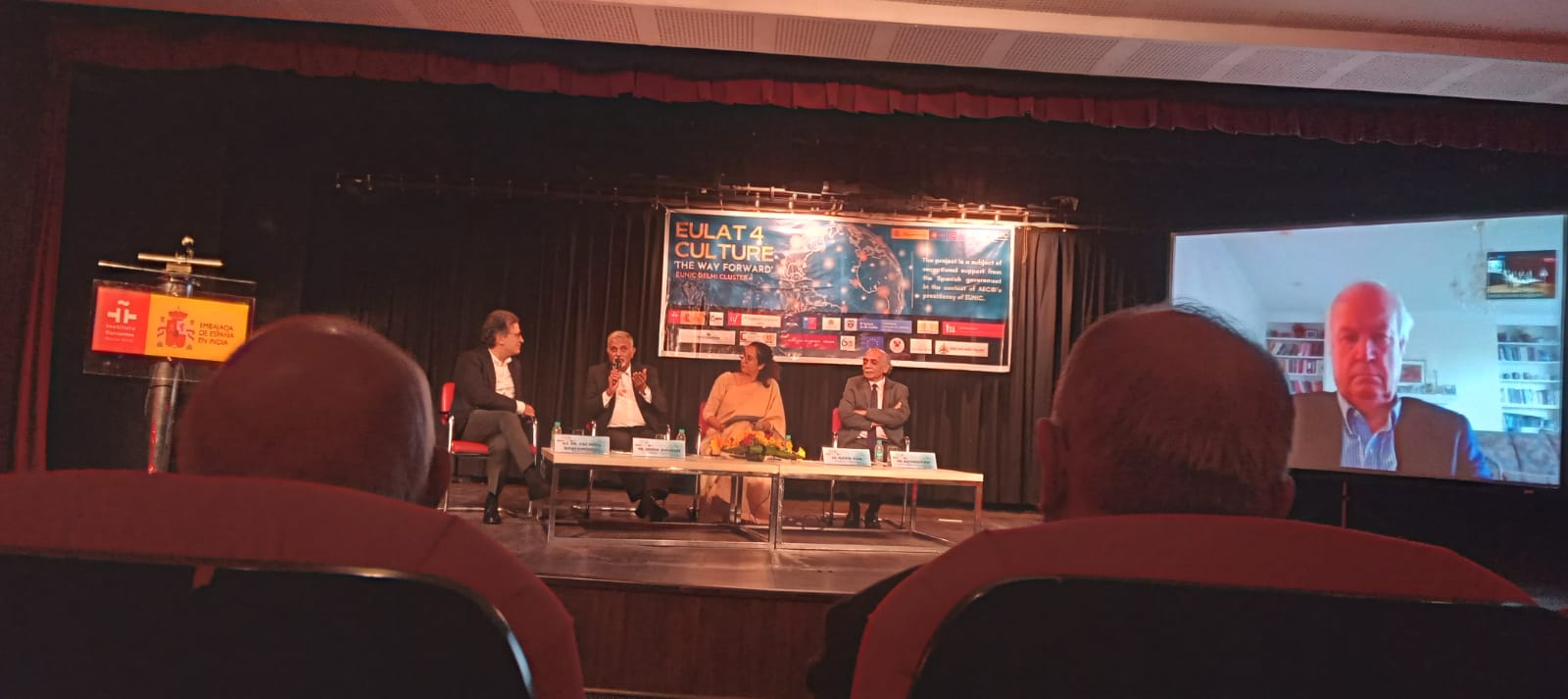ROUND TABLE – INDIA LATIN AMERICA – THE WAY FORWARD
The relationship between India and the region needs to be viewed from the following perspectives: Political, Economic (including commercial), and Social (including cultural and academic).
A serious matrix for the way forward requires Comprehension (of the reality of the other side); Collaboration (political, economic and social interaction); and Consolidation (of the relationship.
Comprehension: Latin America is little known in India and vice versa. There is the myth of distance, but no one speaks of the ‘distance’ from USA, though Sao Paulo is as far from Mumbai as New York, and Mexico as far from Delhi as San Francisco! Language as a barrier is less than in the 20th century, with more Indians learning Spanish and more Latin Americans learning English. China is further away from Latin America and has much greater interaction than India does. Diplomatic representation of India in that region has grown but is still weaker than what is required. Political visits are scanty compared to those with other regions, from both sides, which would help both sides comprehend the imperatives for enhancing the relationship to reach its potential.
Collaboration: Latin America is traditionally tied to the US/Europe. Nowadays some countries have established strong economic links with China and political links with Russia. Political relations with India are cordial but India does not occupy any serious level of priority. Economic relations are far below potential: between $15-20 billion of Indian investment in that region, and about a dozen serious Latin American companies present in India. Two-way trade fluctuates between $40 and 45 billion annually, compared to $ 315 billion with China (2020 – World economic Forum). Trade with India mainly comprises raw materials and agri-products from Latin America and manufactured products from India, the balance in Latin America’s favour normally.
Consolidation: Establishing and strengthening the links is vital. Economic cooperation needs to grow on the base of complementarity that exists. Trade is carried out based on mutual need – not promotion of the strengths on either side. Political relations are cordial with all countries in Latin America, but few are at the level of strategic partnerships that India has developed with countries in Asia, Europe, etc. Very few Universities on either side have area study programs, which would create the base required to take relations to the next level.
EU Role: The looming presence of Russia and China over the region seems to have spurred the European Union (EU) to reassess its policy towards LAC. A recent EU policy paper, accessed and reported upon by the Spanish newspaper El Pais claims: “The credibility of the EU and its power and leverage capacity on the international scene is at stake”. Pointing to the left-wing tide sweeping the region after recent elections in Peru, Chile, Mexico, Honduras, and upcoming possibility of a left-wing victory in Brazil, the EU “needs to systematically boost its multilateral engagement with Latin American and Caribbean countries in view of the increased competition from China and Russia and also to garner support on international forums …” Many Latin American countries feel disappointed after the EU failed to ratify the Free Trade Agreement with Mercosur (Argentina, Brazil, Paraguay, and Uruguay) while the updating of agreements with Mexico and Chile are still bogged down by the ratification process and objections from EU partners such as France.The European Commission has a budget of € 3.4 billion to cooperate with the region during the period 2021-2027. Brussels is also working on an investment package of up to € 8 billion to be announced at the next summit. The last summit was held in December 2021, after a gap of 6 years. The Ibero-American Summits initiated by Spain and Portugal, however have been held more regularly and are a biennial affair.





